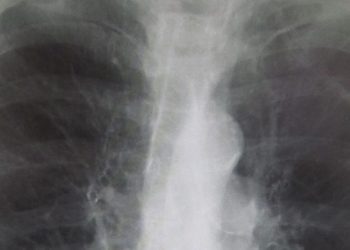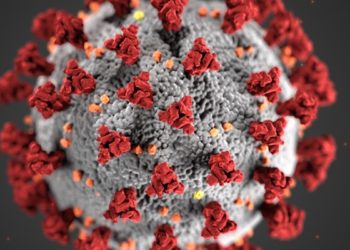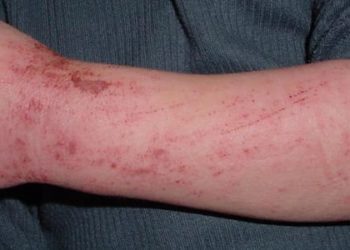[Researcher Comment] Corticosteroid injections for tennis elbow associated with poorer recovery versus placebo
Feb 5th – JAMA – Patients receiving corticosteroid injections for tennis elbow fare worse than placebo at one year.
[tabs tab1=”2MM Rundown” tab2= “2MM Full Report”]
[tab]
Image: PD
1. Patients receiving corticosteroid injections for tennis elbow fare worse than placebo at one year.
2. Physiotherapy made no difference in one-year recovery from tennis elbow.
This study shows that corticosteroid injections are associated with worse outcomes for patients suffering from lateral epicondylalgia (“tennis elbow”). Furthermore, physiotherapy did not ameliorate long-term symptomatology. Routine clinical usage of corticosteroid injection with concomitant active rehabilitation for lateral epicondylalgia is therefore not supported by this study.
This well-powered study nicely invokes a mechanism for the effect by highlighting features of this overuse tendinopathy. Epicondylalgia is characterized by microtrauma-induced changes in the mechanical properties of the tendon. It therefore calls for an emphasis on adequate healing in the long run. While chronic inflammation may be a very minor component of the pathophysiology of this bothersome condition, it seems that attempting to dampen cellular processes with long-term steroid injections may also hamper natural healing mechanisms—a well-known side effect of corticosteroids.
Although physiotherapy did not show to be beneficial long-term, the authors are careful not to dismiss physiotherapy for there is a notable short-term benefit. Future studies to examine the most effective interval and duration of acute physiotherapy may be informative.
Click to read the study in JAMA
[/tab]
[tab]
Image: PD
1. Patients receiving corticosteroid injections for tennis elbow fare worse than placebo at one year.
2. Physiotherapy made no difference in one-year recovery from tennis elbow.
Professor Dr. Bill Vicenzino, MSc, PhD, talks to 2 Minute Medicine: Chair in Sports Physiotherapy at the University of Queensland’s School of Health and Rehabilitation Sciences
 “Prior to our current study we knew that corticosteroid injections for tennis elbow produce a characteristic effect: high success rates early within 6-8 weeks but with high recurrence rates and protracted recovery there afterwards. One of the often recommended solutions to the problem of high recurrence rates and protracted recovery is to add physiotherapy to the injection. In our study, we evaluated the effect of combining injection and physiotherapy and found that (a) adding physiotherapy to corticosteroid injection does not solve the problem, (b) the corticosteroid medication appears to be responsible for the recurrence and delayed recovery (as it was much less in the placebo injection), (c) the effect of physiotherapy is compromised when combined with steroid injection, and (d) those undertaking physiotherapy take significantly less analgesic or anti-inflammatory medication (half as much).”
“Prior to our current study we knew that corticosteroid injections for tennis elbow produce a characteristic effect: high success rates early within 6-8 weeks but with high recurrence rates and protracted recovery there afterwards. One of the often recommended solutions to the problem of high recurrence rates and protracted recovery is to add physiotherapy to the injection. In our study, we evaluated the effect of combining injection and physiotherapy and found that (a) adding physiotherapy to corticosteroid injection does not solve the problem, (b) the corticosteroid medication appears to be responsible for the recurrence and delayed recovery (as it was much less in the placebo injection), (c) the effect of physiotherapy is compromised when combined with steroid injection, and (d) those undertaking physiotherapy take significantly less analgesic or anti-inflammatory medication (half as much).”
This [randomized controlled] study of 165 adults from 2008-2010 with at least 6 weeks of unilateral lateral epicondylalgia consisted of 4 blinded treatment groups: [1] saline injection (placebo), [2] corticosteroid injection, [3] placebo plus physiotherapy and [4] corticosteroid plus physiotherapy. For primary outcome assessment, patients reported their overall symptomatic improvement on a 6-point Likert scale. Other survey instruments were used at various intervals for secondary outcomes.
At 1 year, 90% of all patients reported complete recovery or much improvement, which previous studies have described as the natural history of the disease. At 1 year, the corticosteroid injection group demonstrated lower complete recovery compared to placebo (83% vs. 96%, p<.01) while also resulting in a higher number of recurrences (54 percent vs. 12 percent, P<.001 respectively).The physiotherapy groups showed no difference from those not receiving physiotherapy at 1 year.
In sum: This study shows that corticosteroid injections are associated with worse outcomes for patients suffering from lateral epicondylalgia (“tennis elbow”). Furthermore, physiotherapy did not ameliorate long-term symptomatology. Routine clinical usage of corticosteroid injection with concomitant active rehabilitation for lateral epicondylalgia is therefore not supported by this study.
This well-powered study nicely invokes a mechanism for the effect by highlighting features of this overuse tendinopathy. Epicondylalgia is characterized by microtrauma-induced changes in the mechanical properties of the tendon. It therefore calls for an emphasis on adequate healing in the long run. While chronic inflammation may be a very minor component of the pathophysiology of this bothersome condition, it seems that attempting to dampen cellular processes with long-term steroid injections may also hamper natural healing mechanisms—a well-known side effect of corticosteroids.
Although physiotherapy did not show to be beneficial long-term, the authors are careful not to dismiss physiotherapy for there is a notable short-term benefit. Future studies to examine the most effective interval and duration of acute physiotherapy may be informative.
Click to read the study in JAMA
By Mike Hoaglin and Rif Rahman
More from this author: Glucose but not fructose reduces cerebral blood flow in appetite and reward centers of brain, Sustained etanercept with methotrexate is effective for achieving low disease activity in moderate rheumatoid arthritis patients
© 2013 2minutemedicine.com. All rights reserved. No works may be reproduced without written consent from 2minutemedicine.com. Disclaimer: We present factual information directly from peer reviewed medical journals. No post should be construed as medical advice and is not intended as such by the authors or by 2minutemedicine.com. PLEASE SEE A HEALTHCARE PROVIDER IN YOUR AREA IF YOU SEEK MEDICAL ADVICE OF ANY SORT. Content is produced in accordance with fair use copyrights solely and strictly for the purpose of teaching, news and criticism. No benefit, monetary or otherwise, is realized by any participants or the owner of this domain.
[/tab]
[/tabs]




